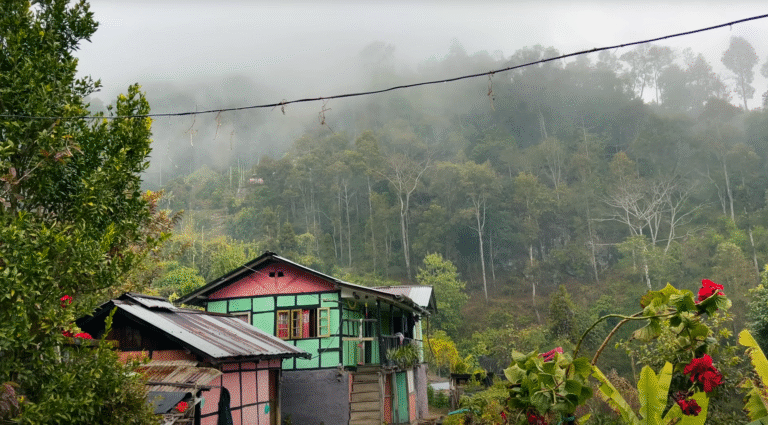Red Panda in Sikkim: Habitat, Conservation & Where to Spot Them

Cradled amidst the towering peaks and emerald forests of the Eastern Himalayas lies one of the most enchanting yet elusive creatures on Earth—the Red Panda (Ailurus fulgens). Known locally as Wah Donka or Habre, this small, tree-dwelling mammal is more than just a wildlife curiosity. It is the state animal of Sikkim, a cultural symbol, and an indicator of the fragile health of the Himalayan ecosystem.
Though overshadowed in global fame by the giant panda of China, the red panda has an equally fascinating story. With its reddish-brown fur, striped tail, and playful yet shy demeanor, it looks like a cross between a raccoon, a fox, and a cat. Yet, it belongs to a completely unique taxonomic family—Ailuridae—making it one of a kind in the animal kingdom.
1. The Red Panda: An Introduction
The red panda is often described as the “firefox of the Himalayas.” It measures about 50–65 cm in length, with a bushy tail of nearly the same size, which it uses for balance and warmth during the cold mountain nights. Unlike its name suggests, it is not closely related to the giant panda. Instead, it is the sole surviving member of its evolutionary family, which diverged millions of years ago.
- Scientific Name: Ailurus fulgens
- Conservation Status: Endangered (IUCN Red List)
- Global Population: Estimated 10,000–15,000 in the wild
- Indian Population: Around 5,000, with a significant number in Sikkim and Arunachal Pradesh
The red panda is a flagship species, meaning its survival reflects the health of the Himalayan ecosystem. Where the red panda thrives, so do countless other species—rhododendrons, orchids, birds, and insects that together form the biodiversity web of the Eastern Himalayas.
2. Sikkim: The Stronghold of the Red Panda
Sikkim, India’s small yet ecologically rich state, is one of the last bastions of the red panda. The state’s forests, ranging from 1,500 to 4,800 meters above sea level, provide the perfect habitat—dense temperate forests of oak, maple, and conifers interspersed with bamboo undergrowth.
Key Habitats in Sikkim
- Khangchendzonga National Park (UNESCO World Heritage Site)
- Home to Sikkim’s largest population of red pandas.
- Dense alpine forests and bamboo groves support their survival.
- Also shelters snow leopards, musk deer, and Himalayan black bears.
- Fambong Lho Wildlife Sanctuary
- Located close to Gangtok, making it accessible for travelers.
- Known for sightings of red pandas along with a rich bird population.
- Singalila Range (shared with West Bengal)
- Part of the corridor connecting populations across Sikkim, Darjeeling, and Nepal.
- Crucial for maintaining genetic diversity.
- Kyongnosla Alpine Sanctuary
- Famous for high-altitude orchids and rhododendrons, as well as red pandas.
Together, these habitats make Sikkim a global hotspot for red panda conservation.
3. Cultural and Spiritual Significance
In Sikkim, the red panda is more than just a species—it is a symbol of harmony with nature. Locals call it Habre, and its shy, peace-loving demeanor is often compared to the Buddhist principles of non-violence and coexistence.
- State Animal of Sikkim: Adopted as a cultural icon, the red panda features in local art, festivals, and eco-tourism campaigns.
- Folklore: In Himalayan myths, the red panda is believed to be a guardian of the forests, watching over bamboo groves and mountain streams.
- Modern Branding: From school logos to eco-tourism boards, the image of the red panda is used to remind citizens of their duty to protect their fragile environment.
4. A Day in the Life of a Red Panda
To understand the red panda, one must step into its secretive world.
- Diet:
- Primarily bamboo leaves and shoots, despite being a carnivore by taxonomy.
- Supplements diet with berries, flowers, acorns, and insects.
- Behavior:
- Solitary and nocturnal; most active at dawn and dusk.
- Uses its long tail as a blanket in the cold.
- Breeding:
- Mates during winter; cubs are born in summer.
- Mothers raise cubs alone in tree hollows or rock crevices.
Unlike tigers or elephants, red pandas are not aggressive apex predators. Instead, they are delicate creatures that demand undisturbed forests and gentle ecosystems to survive.
5. Threats to Survival
Despite their cultural and ecological importance, red pandas in Sikkim face multiple threats.
- Habitat Loss
- Expanding roads, hydroelectric projects, and agriculture reduce their forest homes.
- Bamboo, their primary food, is highly sensitive to deforestation.
- Climate Change
- Rising temperatures push bamboo forests to higher altitudes.
- This forces red pandas into shrinking and fragmented ranges.
- Poaching and Illegal Trade
- Though less common now, red pandas are sometimes hunted for fur or captured for the exotic pet trade.
- Human-Wildlife Conflict
- Encounters with herders, dogs, or livestock can harm these shy creatures.
- Genetic Isolation
- Fragmented populations lead to reduced genetic diversity, making them vulnerable to disease and extinction.
6. Conservation Efforts in Sikkim
Thankfully, Sikkim has emerged as a leader in wildlife conservation in India. Several initiatives safeguard the red panda:
- Protected Areas: Over 30% of Sikkim’s land is under protection through national parks and sanctuaries.
- Ban on Grazing: Livestock grazing in key sanctuaries has been banned to reduce habitat degradation.
- Community Participation: Local communities are encouraged to act as forest guardians through eco-tourism and conservation incentives.
- Captive Breeding Programs: The Himalayan Zoological Park in Gangtok runs a successful red panda breeding program, releasing individuals into the wild to boost populations.
- Eco-Tourism Initiatives: Projects like homestays in forest villages promote conservation-linked livelihoods, reducing dependency on forest exploitation.
Sikkim has even launched the Red Panda Network collaboration with NGOs and researchers, focusing on long-term monitoring and community-based conservation.
7. Eco-Tourism: Spotting the Red Panda in Sikkim
For travelers, spotting a red panda in the wild is a once-in-a-lifetime experience. However, due to their shy nature, sightings are rare. Still, eco-tourism offers a chance to experience their habitat responsibly.
Best Places for Red Panda Sightings
- Khangchendzonga National Park – The top destination for trekking and wildlife.
- Fambong Lho Wildlife Sanctuary – Close to Gangtok, ideal for short trips.
- Singalila Range – Shared corridor where sightings are occasionally reported.
Best Time to Visit
- Autumn (October–December) and Spring (March–May) offer the clearest skies and good chances of spotting wildlife.
Responsible Travel Tips
- Hire local guides trained in eco-tourism.
- Avoid loud noises and plastic waste in sanctuaries.
- Choose eco-lodges and homestays that contribute to conservation funds.
By visiting responsibly, tourists can directly support conservation while experiencing Sikkim’s natural wonders.
8. The Red Panda in Global Context
Sikkim is not alone in protecting the red panda. Globally, the species is distributed across Nepal, Bhutan, Myanmar, and China. However, Sikkim’s contribution is unique: despite its small size, the state safeguards one of the most viable populations in India.
The global conservation community has identified the red panda as a priority species, ensuring it receives funding and international attention. Yet, local grassroots participation—as seen in Sikkim—remains the key to its survival.
9. The Future of the Red Panda in Sikkim
The road ahead is both challenging and hopeful. With climate change accelerating and developmental pressures mounting, red pandas remain at risk. Yet, Sikkim’s governance model offers inspiration.
Key Recommendations for the Future:
- Expand bamboo reforestation projects.
- Strengthen eco-tourism policies that benefit local communities.
- Develop wildlife corridors connecting fragmented habitats.
- Continue education campaigns in schools to foster pride in the red panda.
- Enhance cross-border cooperation with Nepal and Bhutan for landscape-level conservation.
10. Why the Red Panda Matters
At first glance, the red panda may seem like just another rare animal. But in truth, its story is deeply interwoven with the fate of the Himalayas. Protecting the red panda means protecting the entire ecosystem of Sikkim—the rivers that provide water, the forests that prevent landslides, and the biodiversity that sustains life.
For travelers, conservationists, and locals alike, the red panda is not just a symbol of Sikkim but a reminder of our collective responsibility to safeguard the fragile treasures of the natural world.
Conclusion
The red panda of Sikkim is an endangered wonder, shyly watching from the treetops of the Himalayan forests. Its presence is a gift, a sign that the mountains still breathe with life. But its survival depends on us—on mindful tourism, community action, and relentless conservation.
So, the next time you wander through the rhododendron forests of Sikkim, pause, look up, and you might just glimpse a bushy tail disappearing into the canopy—a fleeting encounter with the guardian spirit of the Himalayas, the red panda.





